Which Cheap European Airlines Are Worth Flying?
Some European airlines, like Ryanair and EasyJet, are known for their incredibly low fares — and their high fees.
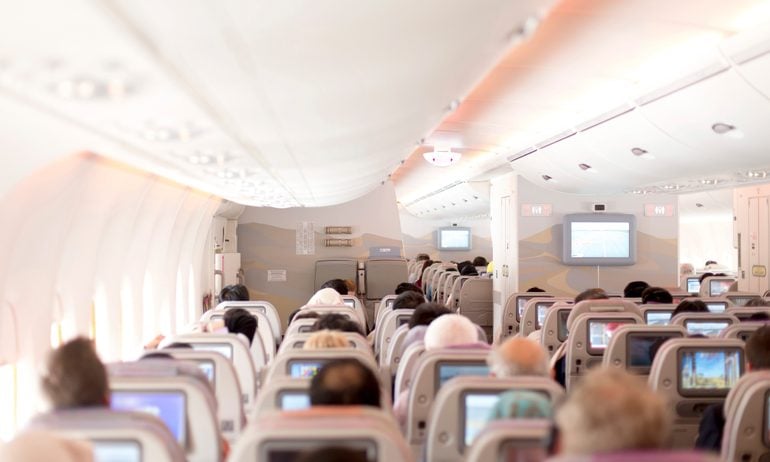
Many or all of the products on this page are from partners who compensate us when you click to or take an action on their website, but this does not influence our evaluations or ratings. Our opinions are our own.
If you're headed across the Atlantic, Europe’s budget airlines are certainly tempting for getting around the continent. These carriers offer surprisingly low fares and direct flights between popular destinations, and they typically don't force flyers to connect through a major hub.
But while these low-cost airlines in Europe are famous for their affordable fares, they're also infamous for their fees. As the adage goes, you get what you pay for. It may be cheap to fly yourself and perhaps a small bag to your destination, but when fees start adding up, your final cost could be much higher than you expected.
Here’s a look at the biggest and the best cheap European airlines so you can decide for yourself whether they’re worthwhile — or whether you should find another way to get around Europe.
The largest low-cost airlines in Europe
In Europe, the lowest-cost airlines are also some of the biggest: seven of the top 14 European airlines in 2019 were low-cost carriers. This list includes Ryanair — the biggest airline in Europe and one of the biggest in the world — and EasyJet.
In 2019, the six biggest low cost airlines in Europe were:
Ryanair: 152 million passengers.
EasyJet: 97 million passengers.
Wizz Air: 39.8 million passengers.
Norwegian Air Shuttle: 36 million passengers.
Vueling: 34.6 million passengers.
Pegasus: 30.5 million passengers.
If you’re headed to Europe, there’s a good chance Ryanair or EasyJet flights could get you where you want to go. Here’s a closer look at the two biggest low-cost European airlines.
Ryanair
Ryanair started in 1985 with just one 15-seat aircraft. Now, the Dublin-based airline operates hundreds of Boeing 737-800 aircraft, plus one 737-700 all-business-class aircraft used for VIP operations.
Its Boeing 737-800 aircraft are packed with 189 seats, and most seats have 30 inches of pitch. That's tight, but not as bad as Spirit's 28-inch pitch. Ryanair also offers "premium" seats in the first few rows; these are sized between 32 and 34 inches of pitch.
Ryanair's operations spread far and wide: The airline operates over 2,400 daily flights from 82 crew bases to over 200 destinations in 40 countries (give or take due to the pandemic). The airline's unique route map gives passengers an incredible number of nonstop flight options. For example, you can fly Ryanair to the small Mediterranean island of Mallorca, Spain, from more than a dozen countries — with origins ranging from Bristol, England, to Warsaw, Poland.
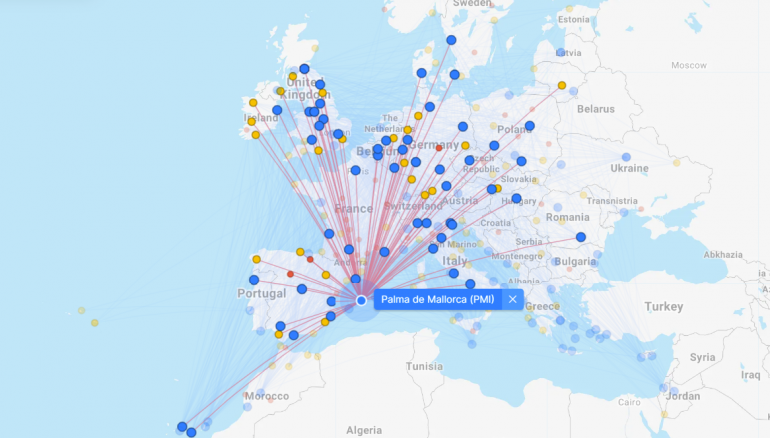
To see all of your flight options and the cheapest prices, just enter an origin in Ryanair's route map search tool.
EasyJet
EasyJet launched in 1995 using aircraft leased from other airlines. Within a year, EasyJet bought its own planes and expanded internationally. It has grown to a massive airline, flying almost 100 million passengers in 2019 before the pandemic stunted its growth.
While Ryanair uses Boeing 737s, EasyJet operates over 300 Airbus A320-family aircraft. These aircraft vary in capacity from 156 to 235 passengers, with seats offering just 29 inches of pitch (one inch smaller than RyanAir's typical size).
EasyJet is based out of London Luton Airport and offers routes all over Europe — particularly from London. As of spring 2021, EasyJet operates to 150 destinations in 37 countries.
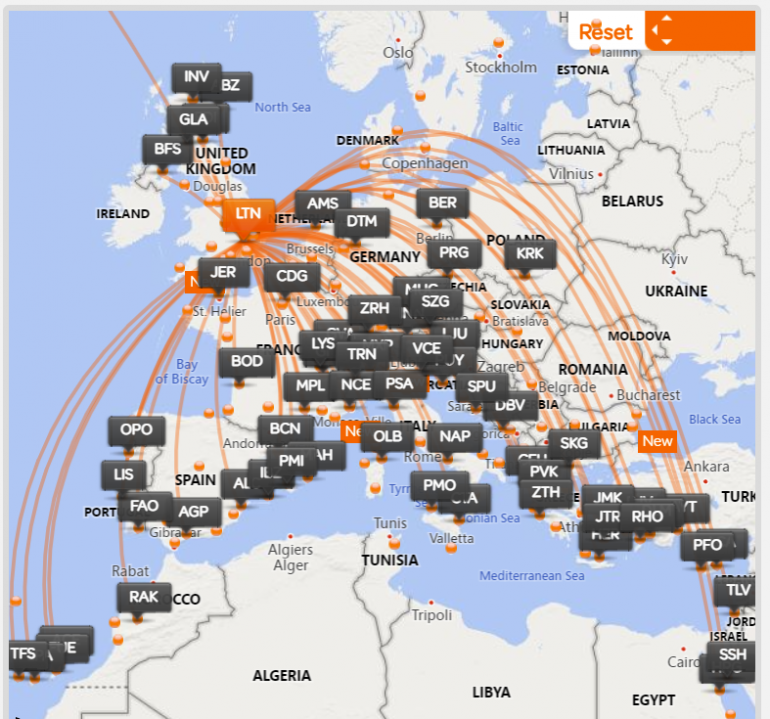
While certainly a low-cost airline, EasyJet isn't nearly as no-frills as Ryanair. Until February 2021, EasyJet even allowed passengers to carry on a bag for free. Although this advantage is gone, EasyJet sets itself apart from Ryanair by being far less punitive with fees. For example, EasyJet allows free changes as long as you make them online more than 14 days prior to departure.
Use EasyJet's Low Fare Finder to search for the cheapest fares. Enter your origin and destination to see the lowest fares by month and by day. EasyJet even highlights the number of seats costing less than around $70 (£50) on this route:
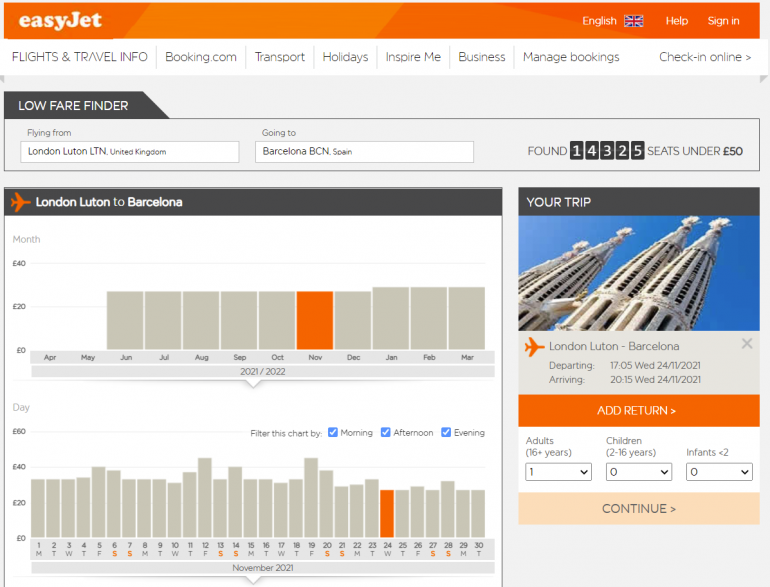
What to consider when flying low-cost airlines in Europe
The base airfare is just one variable to consider. Here's what to watch out for when deciding whether to fly.
You might get dinged for add-on fees in unexpected ways
European low-cost airlines can offer some jaw-droppingly low fares. But fares are just one way these airlines make money. More than 31% of Ryanair's passenger revenue comes from "ancillary" fees. At Wizz Air, over 45% of revenue comes from add-on fees.
Though Americans are used to fees for carry-on bags and assigned seats when flying low-cost carriers like Spirit and Frontier, budget airlines in Europe take things much further.
For example, Ryanair charges a steep “airport check-in fee” if you wait until you’re at the airport to check in: around $67 (55 euros) for flights in Europe or around $78 (£55) for flights in the U.K. Even if you checked in online, you'll have to pay a "boarding card reissue fee" to print a boarding pass. The fee is around $24 (20 euros) in Europe or around $28 (£20) in the U.K.
Read the fine print. To avoid fees, pack light, check in online and download the airline's app before leaving your hotel (that way you'll have a digital boarding pass).
If you don't measure and weigh your bags carefully, you might get dinged again
Just because you've been able to carry a bag on a flight in the U.S. doesn't mean you'll be able to do so when flying on cheap airlines in Europe.
For example, Ryanair fares include only one personal item up to about 16 by 10 by 8 inches. You'll need to pay between $7 (6 euros) and $24 (20 euros) — or between $8.50 (£6) and $28 (£20) in the U.K. — to bring a second bag onboard. For your second bag to avoid fees, it can’t be bigger than 22 by 16 by 8 inches, and must weigh less than 22 pounds.
If you have an oversize bag, you'll have to pay a fee of around $85 (70 euros) to gate check it.
EasyJet's cabin bag allowance is a bit more generous. All passengers can carry a small bag measuring approximately 18 by 14 by 8 inches. To bring a larger bag onboard, you'll need to upgrade to an "up front" or "extra legroom" seat or a FLEXI fare. You can also do so if you carry an EasyJet Plus credit card.
» Learn more: Important credit card tips to take with you overseas
An inflexible schedule could spell trouble
Low-cost airlines keep their fares low by flying an aggressive schedule — sometimes, the turnaround time between the scheduled arrival of one flight and the departure time of the next flight on the same aircraft may be just 25 minutes. Further, since these airlines use their aircraft for many flights each day, delays can really pile up when issues arise.
Before booking one of these cheap airfares, keep your schedule flexible and be mentally prepared for flight delays.
» Learn more: What you need to know about flight insurance
When not to fly on a low-cost airline
Many Americans have a flying-first mentality. After all, flying is usually the most convenient option for getting between cities in the U.S. That's not always the case in Europe. Avoid flying budget airlines in these circumstances:
You need to be somewhere at a specific time. It's best to avoid flying a low-cost airline if you need to arrive on time for a concert, dinner or other important event later that day.
The train station is better located. The continent’s rail network is extensive, and many European cities were built around the continent's train system. So a city's train station may be centrally located, but the airport may be far away from the city. Once you factor in commuting to and from the airport, it might be much faster to take the train.
The bus routes work out in your favor. Intercity buses are another option to consider in Europe. FlixBus and other bus lines offer cheap, convenient and clean options to get between European cities.
Check a route-option tool like Rome2Rio to compare the time and cost for getting between any two locations on train, bus, car or plane.
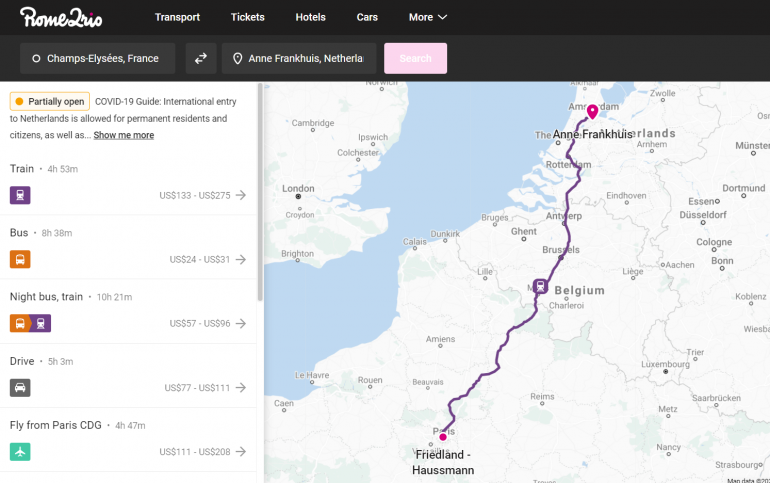
If you decide flying on a low-cost airline in Europe is worth it
Low-cost airlines in Europe are famous for their low fares, but they're famous for their high fees, too. In general, always factor in the fees and other (sometimes unpleasant) aspects of flying a low-cost carrier and consider options that might be faster, nicer and possibly even cheaper.
How to maximize your rewards
You want a travel credit card that prioritizes what’s important to you. Here are some of the best travel credit cards of 2025:
Flexibility, point transfers and a large bonus: Chase Sapphire Preferred® Card
No annual fee: Wells Fargo Autograph® Card
Flat-rate travel rewards: Capital One Venture Rewards Credit Card
Bonus travel rewards and high-end perks: Chase Sapphire Reserve®
Luxury perks: The Platinum Card® from American Express
Business travelers: Ink Business Preferred® Credit Card
Chase Sapphire Preferred® Card
Travel
Dining
🔥 Huge highest-ever bonus on NerdWallet's 2025 Best All-Purpose Travel Rewards Card is back. Don't miss your rare chance to: Earn 100,000 points when you spend $5,000 on purchases in the first three months. That's worth at least $1,250 toward travel booked through Chase.


